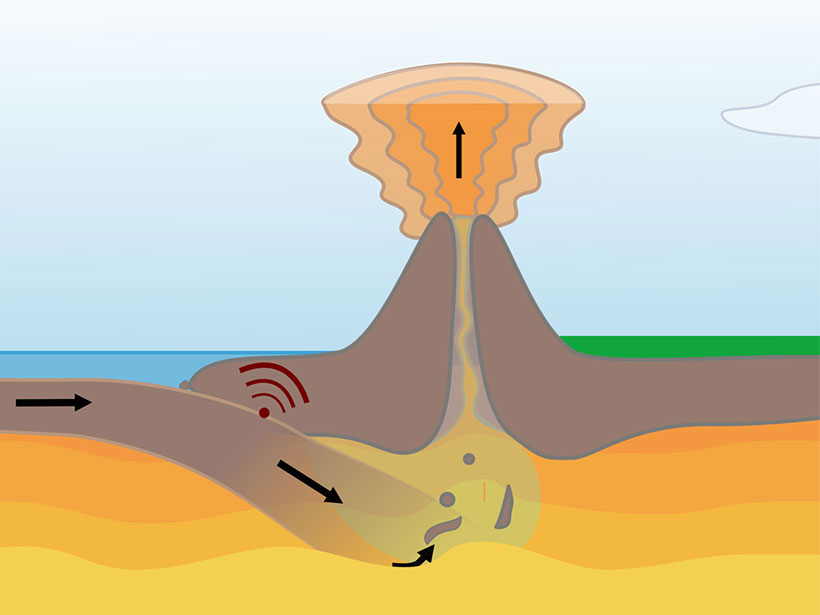In tectonic subduction as in love, it takes two to tango. Excepting the rare cases where two tectonic plates collide and dive down toward the mantle together, for every subducting plate there is an unsubducted plate in the mix—the overriding plate. Yet in most research into the dynamics of plate subduction, the role of the overriding plate has been largely overlooked.
Previous research has shown that the thickness, composition, density, and strength of the subducting plate affect how the sinking crust moves deeper into the Earth. In their research, Sharples et al. found that the properties of the overriding plate have a similar effect. The makeup of the overlying plate, the authors found, can affect everything from the penetration depth and angle to whether the subduction zone will move in retreat or advance.
Through numerical modeling, the authors tested the effect of varying lithosphere properties in the overriding plate on slab subduction. They used model lithospheres set to represent, roughly, oceanic, continental, and mountain belt material.
The authors found that regardless of strength or density, thin overlying plates will always have retreating subduction zones. As the overlying plate gets thicker, however, the types of interactions become more diverse. Thick, strong overlying plates are associated with trench advancement, low amounts of slab dip, high slab penetration, and an increasing tendency toward flat subduction.
The authors suggest that considering the role of overriding plates could help explain some of the diverse subduction dynamics observed at tectonic boundaries worldwide. (Journal of Geophysical Research: Solid Earth, doi:10.1002/2014JB011163, 2014)
—Colin Schultz, Freelance Writer
Citation: Schultz, C. (2015), Overriding plate’s properties affect subduction, Eos, 96, doi:10.1029/2015EO026911. Published on 26 March 2015.
Text © 2015. The authors. CC BY-NC 3.0
Except where otherwise noted, images are subject to copyright. Any reuse without express permission from the copyright owner is prohibited.

